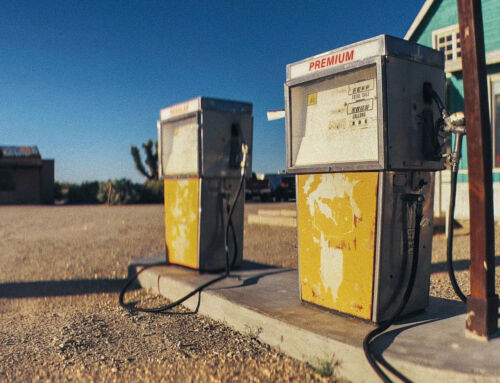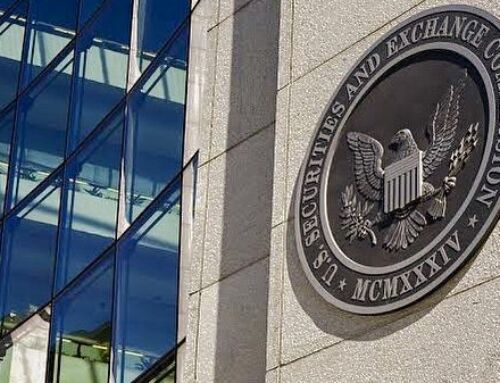View by Topic
Recent Articles
-
Energy Star: A Quiet Exit and a Bright Future Beyond GovernmentSaturday, June 7th, 2025
-
Congress Blocks California’s Gasoline Car BanSaturday, May 31st, 2025
-
EPA Will Keep Current Limits for “Forever Chemicals” in Drinking WaterSaturday, May 24th, 2025
-
Court Indefinitely Pauses SEC Climate Rule LitigationSaturday, May 17th, 2025
-
Maryland is About to Regulate Mold But is the Cart Before the HorseSaturday, May 10th, 2025
View by Month/Year
“Green Building Law Update” Headlines
Recent Articles & News from
Stuart Kaplow’s blog
at GreenBuildingLawUpdate.com
- Congress Blocks California’s Gasoline Car Ban: A Legal and Policy Analysis June 1, 2025
- EPA Will Keep Current Limits for “Forever Chemicals” in Drinking Water May 25, 2025
- Court Indefinitely Pauses SEC Climate Rule Litigation May 18, 2025
- Maryland is About to Regulate Mold: But is the Cart Before the Horse? May 11, 2025
Subscribe to the Green Building Law Update!
Stuart Kaplow brings his expertise and extensive experience to the table with his unique digital publication, "Green Building Law Update". Subscribers receive regular updates to keep them informed about important issues surrounding Environmental Law, Green Building & Real Estate Law, as well as the emerging demand for Environmental Social Governance (ESG).
Get fresh content through the lense of Stuart Kaplow's cutting-edge expertise, innovative commentary and insider perspective. Don't miss another issue! Subscribe below.

Energy Star: A Quiet Exit and a Bright Future Beyond Government
The FY 2026 President’s Budget delivers a clear message, Energy Star, as a federal program, is on its way out. Zero dollars are appropriated for the once innovative joint EPA and Department of Energy initiative, and the EPA’s June Budget in Brief confirms what many had quietly predicted, Energy Star is all but certain to be eliminated.
Today, that federal program has reached its inflection point. The EPA is undergoing a second wave of voluntary resignation offers, and after a May 5, 2025, staff meeting where the director of the Office of Atmospheric Protection informed employees that the office and its associated programs, including Energy Star, would be eliminated, key Energy Star staff reportedly accepted buyouts. With over a 54% reduction in funding and shrinking staff, the agency is no longer positioned to sustain the program.
And yet, the larger story isn’t one of loss, it’s one of opportunity.
The Creation Story
Created in 1992 under President George H.W. Bush, Energy Star was a ‘voluntary’ labeling program conceived to reduce power consumption and promote energy efficient products, the first of which were labels for computers and their peripherals. In 1995 the program was significantly expanded, introducing labels for residential heating and cooling equipment.
Since then, the program transmogrified into a vast government bureaucracy that last year certified over 50,000 products, not to mention swelling into a civil service scoring residential and commercial buildings and more. And most objectionable to many is that the voluntary program has been perverted into a ‘mandatory’ reporting greenhouse gas emission tool in jurisdictions from Maryland to Denver, utilizing Energy Star’s Portfolio Manager.
The Rest of the Story
But the rest of the story is that EPA Administrator Lee Zeldin last week told Congress that Energy Star could be privatized. “This program is an example of one that can be run outside of the government,” Zeldin said at the hearing of the House Energy and Commerce Environment Subcommittee in response to questions from Rep. Darren Soto (D-Fla).
In recent days, Zeldin added, “multiple entities” have reached out to EPA “because they want to take over Energy Star, which is a program that requires a big staff, a big taxpayer-funded staff, and a whole lot of tax dollars.”
Of note, Energy Star was proposed to be sold to a private entity during Trump 45, but only the appliance labelling program was considered saleable, not Portfolio Manager.
Not a Proper Government Function
A just published study by the Competitive Enterprise Institute, “Modernizing the EPA”, articulates clearly that the Energy Star program assumes,
“ .. the federal government needs to meddle in the marketplace by providing its seal of approval on what it deems to be environmentally satisfactory products. If consumers demand certain information, then businesses will respond by disseminating this information to them. If there is a need to create a labeling program to ensure credibility and consumer confidence, then private certification organizations should play such a role.”
The efficacy of focusing on energy costs at time of retail purchase but not at time of design of a product or time of use has been questioned, including by the Cato Institute, “.. the Energy Star label, which only provides a binary signal about the most energy efficient products in the marketplace, is a very coarse piece of energy information that may crowd out efforts to compute more accurate energy operating costs.” Today, over 76% of U.S. households have smart electric meters (that have nothing to do with Energy Star).
Issues of energy efficiency are not lost on the American populous and recent executive orders by the Trump administration rolling back water pressure standards on showerheads, faucets, dishwashers, toilets, and washing machines are incredibly popular with the public.
The Energy Star program has faced controversy and scrutiny over its lack of transparency and vulnerability to fraud. A GAO undercover investigation, some years ago, obtained Energy Star certifications for bogus products, including a gas powered alarm clock.
Misguidedly, more than 1,000 trade associations, environmental groups, and others recently sent a letter to EPA urging support for the Energy Star program. The letter ignores the prospect that the program could continue outside of government, as better owned and operated in the private sector. Operators of LEED, BREEAM, Fitwel, and the WELL Building Standard have led this opposition, including complaining that a shut down would cause them to have to revise their rating systems, but they are just the type of private organizations that could run Energy Star.
Making it Mandatory was the Death Knell
The push to save Energy Star by the environmental industrial complex sidesteps the query of ‘what is a legitimate function of government.’ But the death knell for Energy Star may have been the shift from the original aim of “power saving” to now greenhouse gas emission reduction, and in recent years that state and local governments have overstepped from what was a voluntary program to being mandatory in BEPS and other climate laws.
To be clear, the Trump administration’s fiscal year 2026 budget proposes eliminating the EPA’s Atmospheric Protection Program, the program under which Energy Star operates.
Backup for the Future
Our advice to clients and friends is to back up your Energy Star data now! There are private companies already vying to become the private sector default for energy benchmarking, which will do that for free.
The reality is while once innovative, the Energy Star program is today a prime example of a government function that the private sector is not only capable of replicating, but is, in many ways, already doing better.
While the future of Energy Star remains to be seen, hopefully, Congress will not let political science prevail over engineering. The shift to a private benchmarking ecosystem aligns with broader trends toward market solutions and innovation, including the use of artificial intelligence. Rather than mourn the passing of a more than 30 year old government program, this is an opportunity to embrace better tools, greater flexibility, and a more competitive market for energy efficiency.
There is no doubt that Energy Star has done good; however, rather than lament a program that is a prototypical example of government doing something that is not a proper function of government, and that the private sector will do better, embrace privatization that will be a leap forward into a more dynamic, efficient, and innovation rich future.
_________________________
Join us for the next in our “carbon based life form” webinar series, “Maryland BEPS Update for Building Owners” this Tuesday, June 10 from 9 – 9:30 am. The webinar is complimentary, but you must register here.









